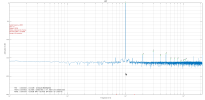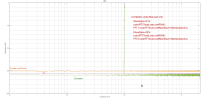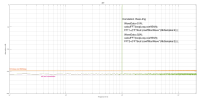FrenchFan
Active Member
- Joined
- Mar 12, 2024
- Messages
- 177
- Likes
- 82
@JohnPM
@Rja4000
@nanook
Hello John
I develop my own measurement scripts.
With the help of fr Rja4000 and nanook we
started a discussion on
"Using Cross Corelation to lower influence of ADC for DAC measurements"
I implemented this feature that I discovered on
an explainer of a Quantasylum analyzer that implements it.
I think that a little interest has emerged on this feature.
I left in the first of this discussion the sources
"octaves" to perform tests .. FFT, weighting windows,
calculation of THD and launch and calculation of the correlation + graph of
result.
Maybe you are reading this discussion.
I would like you to give us your opinion on this.
Of course, you are free to implement it, but, I think, that there are
people who would already like to use it and the validate.
Thanks if you can spend some time for this expertise.
Sincerely
I leave Rja4000 and nanook in copy
@Rja4000
@nanook
Hello John
I develop my own measurement scripts.
With the help of fr Rja4000 and nanook we
started a discussion on
"Using Cross Corelation to lower influence of ADC for DAC measurements"
I implemented this feature that I discovered on
an explainer of a Quantasylum analyzer that implements it.
I think that a little interest has emerged on this feature.
I left in the first of this discussion the sources
"octaves" to perform tests .. FFT, weighting windows,
calculation of THD and launch and calculation of the correlation + graph of
result.
Maybe you are reading this discussion.
I would like you to give us your opinion on this.
Of course, you are free to implement it, but, I think, that there are
people who would already like to use it and the validate.
Thanks if you can spend some time for this expertise.
Sincerely
I leave Rja4000 and nanook in copy






